|
|
|
Sort Order |
|
|
|
Items / Page
|
|
|
|
|
|
|
| Srl | Item |
| 1 |
ID:
128598
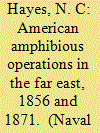

|
|
|
|
|
| Publication |
2013.
|
| Summary/Abstract |
The author examines two little known small scale amphibious operations from the mid 19th century, which still have some relevance to operations today.
|
|
|
|
|
|
|
|
|
|
|
|
|
|
|
|
| 2 |
ID:
138723


|
|
|
|
|
| Summary/Abstract |
Since its European settlement in 1788, Australia has been dependent on great-power protectors for its security. Initially this security was achieved by virtue of Australia’s status as a British colony, later as a member of the British Commonwealth. In return for its protection, Australia committed military forces in support of British interests to the Sudan, in the Boer War, and in the First and Second World Wars. Australian support for these actions was premised on two key factors: Australia’s membership in the Empire (and with that the identity of its citizens as “independent Australian-Britons”) and the assessment, universal among Australians, that support and protection of the Empire and of British interests were also in their interest
|
|
|
|
|
|
|
|
|
|
|
|
|
|
|
|
| 3 |
ID:
181205
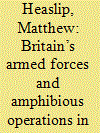

|
|
|
|
|
| Summary/Abstract |
Gallipoli left a lasting impression upon both the countries that participated and many that did not. It has been argued that the campaign negatively influenced Britain’s interwar amphibious preparations. Instead, this article will show that Britain’s armed forces were largely unaffected by such memories, and maintained their relative global standing in theory, equipment and training exercises for landing operations. The paper also highlights the role of amphibious warfare in fighting the many ‘little wars of Empire’ during the period.
|
|
|
|
|
|
|
|
|
|
|
|
|
|
|
|
| 4 |
ID:
157450
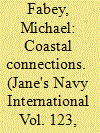

|
|
|
| 5 |
ID:
179964
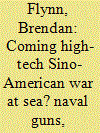

|
|
|
|
|
| Summary/Abstract |
In an era of cyber threats, drones and artificial intelligence, will the future of inter-state warfare at sea inevitably be high tech? This paper challenges assumptions about the ubiquity and importance of high technology in any future naval clash between China and America. While taken as a given that the most advanced weapons and platforms will be vital to such a conflict, both navies also employ legacy weapons and older technologies. A case study is offered here of medium calibre naval guns, seen on the very latest naval surface combatants of both China, the USA, and other major navies. Why do modern navies persist with such seemingly old weapons? To what extent are they likely to be important in any future conflict? It is argued that overly focusing on the latest high-tech weapons risks a type of naïve technological determinism and obscures how high- and low-tech weapons are often complementary. It is this synergy that requires greater understanding and attention. Moreover, relatively low-tech weapons like guns could be surprisingly relevant in the context of hybrid and amphibious warfare scenarios involving China and the USA, especially for the diplomacy of the “shot across the bows”.
|
|
|
|
|
|
|
|
|
|
|
|
|
|
|
|
| 6 |
ID:
137944
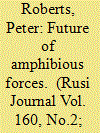

|
|
|
|
|
| Summary/Abstract |
In an era of international relations that is increasingly characterised by complexity and uncertainty, as well as a growing domestic reluctance to become ‘entangled’ abroad, the military options for political leaders in dealing with emerging crises appear to be dwindling. However, in this article Peter Roberts avers that there is one element of the British armed forces – its amphibious capability – that is relatively under-used as currently configured. If transformed into smaller, more frequently forward-deployed and capable units, amphibious forces could offer politicians an alternative option in crisis situations, and especially in those that emerge in the complex environment of the littoral.
|
|
|
|
|
|
|
|
|
|
|
|
|
|
|
|
| 7 |
ID:
119504
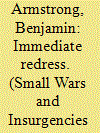

|
|
|
|
|
| Publication |
2013.
|
| Summary/Abstract |
Maritime interests in the twenty-first century are not immune to the growing number of irregular challenges and hybrid threats that have come to dominate land warfare. In order to better understand these challenges a study of naval history can help provide a vital foundation. In the early 1830s the United States Navy dispatched the frigate USS Potomac to Sumatra to investigate a pirate attack on the spice trader Friendship. Potomac's crew of sailors and Marines conducted a landing at the village Quallah Batoo and fought a pitched battle. As the navies of the world approach naval irregular warfare in the new century, studying past examples like Potomac's mission can help illuminate the principles of successful naval irregular warfare.
|
|
|
|
|
|
|
|
|
|
|
|
|
|
|
|
| 8 |
ID:
002504
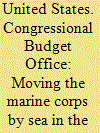

|
|
|
|
|
| Publication |
Washington, Congressional Budget Office, 1989.
|
| Description |
xviii, 71p.
|
|
|
|
|
|
|
|
|
|
|
|
Copies: C:1/I:0,R:0,Q:0
Circulation
| Accession# | Call# | Current Location | Status | Policy | Location |
| 033953 | 359.96/UNI 033953 | Main | On Shelf | General | |
|
|
|
|
| 9 |
ID:
121684
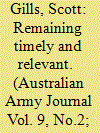

|
|
|
|
|
| Publication |
2012.
|
| Summary/Abstract |
Since 1999, reinvigorated understanding and investment has seen an increase in the effective
use of intelligence and its associated intelligence, surveillance and reconnaissance collection
capabilities during recent operations in the Middle East and South Asia. During this period
Army's intelligence capability has demonstrated agility in tailoring its organisation to meet
evolving expeditionary force requirements-this has been no more evident than during
deployments to Afghanistan. This article examines two key challenges for Army's intelligence capability post-Afghanistan. Initially, it will examine the challenge of introducing
the provision of professional intelligence support to commanders at Army's highest levels in
order to improve synchronisation of effort regarding intelligence activities across the Service.
Secondly, it will review the provision of intelligence support to amphibious operations and
the challenge of preparing personnel for employment within a new capability, while being
constrained by time and a lack of current knowledge, skill and experience.
|
|
|
|
|
|
|
|
|
|
|
|
|
|
|
|
| 10 |
ID:
133412
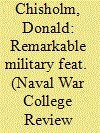

|
|
|
|
|
| Publication |
2012.
|
| Summary/Abstract |
The difficulty . . . to be got over is to know how not only to invade with success; but likewise to retreat with safety.
THOMAS MORE MOLYNEUX
I kept the sea always on my flank; the transports attended the movements of the army as a magazine; and I had at all times, and every day, a short and easy communication with them. The army, therefore, could never be distressed for provisions or stores, however limited its means of land transport; and in case of necessity it might have embarked at any point of the coast.
SIR ARTHUR WELLESLEY
Amphibious operations exploit the great facility and inherent flexibility of movement and maneuver that the sea affords in order to concentrate military power at the decisive time and place ashore
|
|
|
|
|
|
|
|
|
|
|
|
|
|
|
|
| 11 |
ID:
127731
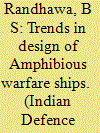

|
|
|
|
|
| Publication |
2014.
|
| Summary/Abstract |
Over the last four decades, the main factors influencing amphibious operations have altered, and these have had a bearing on the design of amphibious ships. In particular, the capability of shore-based coastal defence has increased by several magnitudes. Consequently, frontal amphibious assaults against well-defended positions, of the type executed during WW II, would, in all probability, not be contemplated in view of the likelihood of high casualties. Whatever be the objective, certain common conditions would need to be ensured for the success of the operation, and the design of modern amphibious ships has been driven by the need to meet these conditions.
|
|
|
|
|
|
|
|
|
|
|
|
|
|
|
|
|
|
|
|
|